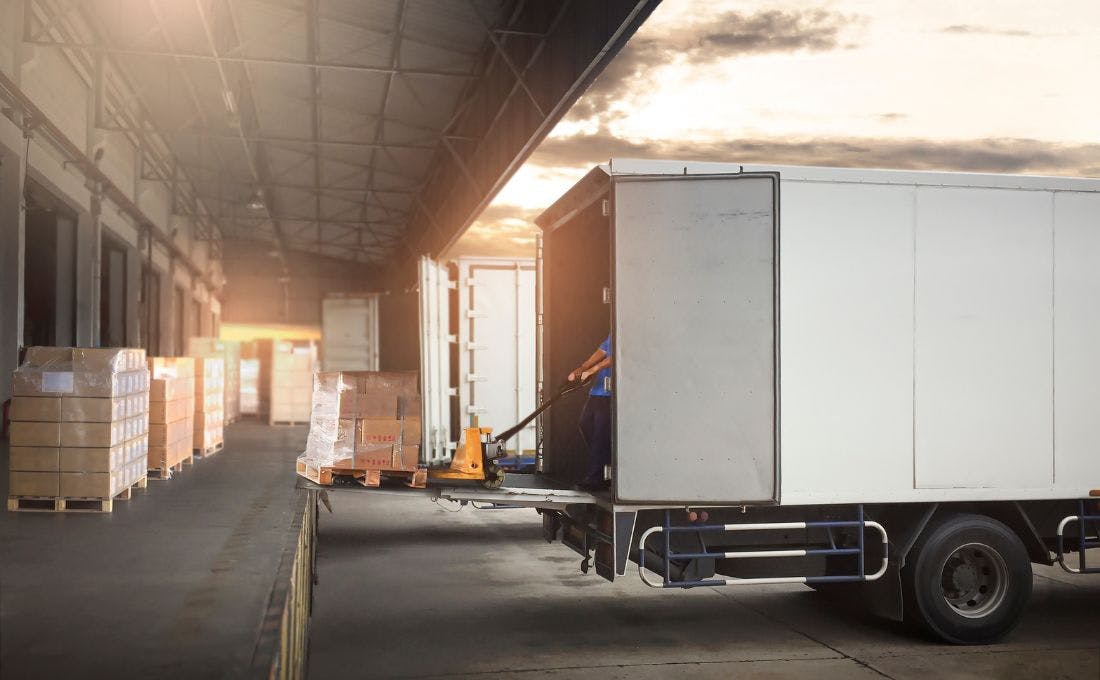Introduction: Overcoming the Hidden Costs of Inefficient Load Building
Today’s supply chain and logistics professionals are expected to drive greater efficiency with fewer resources, all while upholding service and compliance standards. Yet a persistent challenge remains: inefficient load building slows down warehouse operations, increases miles driven and fuel used, and even puts vital customer relationships at risk due to late or incomplete deliveries.
Manual and first-generation load planning approaches might once have been sufficient, but today, they are outpaced by the complexity, speed, and volume of modern supply chains. As costs rise and customer demands intensify, the inefficiencies of legacy planning can represent a major profit drain.
Modern supply chains need robust, data-driven solutions that integrate seamlessly into operations, automate complex decisions, and empower teams. But here’s the good news: next-generation load building solutions are rewriting the rules, turning load planning from a cost drain into a driver of profit and competitive advantage.
This e-guide examines the evolution from first-generation to next-generation load building tools. We explore four critical focus areas – Order Optimization, Axle-Weight Compliance, Product Stackability, and Warehouse Execution – and demonstrate how new technologies radically improve operational performance. Real-world examples illustrate measurable gains and best practices that will allow your organization to harness the full potential of smarter load building.
The ability to effectively plan loads is the difference between profit and loss.
From Siloed, Manual Planning to a Smarter Approach
Traditional methods of load building – spreadsheets, instinct, and experience-driven planning – leave money on the table:
- Open pallet spots go unused
- Manual miscalculations lead to overweight loads
- Shipments are delayed by planning bottlenecks
- Environmental goals fall short
Overcoming these issues starts with having the right technology in place. With smarter tools – such as data-driven, automated load planning – you have a powerful opportunity to evolve load building from a cost center to a true profit driver:
✓ Fill every available inch of trailer space with confidence
✓ Standardize loading processes across your team
✓ Reduce shipping costs and carbon footprint
✓ Win back time for planners and warehouse staff
Optimizing loading efficiency and capacity is crucial for maintaining a competitive edge. Whether you’re looking to improve your current processes or seeking new ways to maximize efficiency, this guide provides valuable insights that can elevate your supply chain.
In today’s market, speed and efficiency are paramount. Leveraging data-driven load planning techniques provides significant competitive advantages.
Getting Started: What to Know Before You Optimize
Successful optimization starts with accurate data, real-world operational insights, and a change-ready culture that's aligned, informed, and supported.
Good Data is Fundamental.
You can’t optimize what you don’t measure! Make sure your SKU information (dimensions, weight, stackability rules) is clean and accurate.
Go Beyond the Desk.
Talk to your warehouse teams. Their “tribal knowledge” will surface real-world rules and exceptions that polished data sometimes misses.
Prioritize Change Management.
Introducing new tech and processes works best when teams understand the “why” and feel supported. Set clear expectations, get leadership buy-in, and foster an environment open to change.
Four Keys to Success with Next-Gen Load Building
Order Optimization
Transforming from Reactive Loading to Proactive Upstream Planning

Axle-Weight Compliance
Safeguarding Loads and Drivers While Reducing Damages and Risk

Product Stackability
Maximizing Load Density Without Sacrificing Safety

Warehouse Execution
From Manual Bottlenecks to Standardized Excellence
Order Optimization
Order optimization is extremely critical for creating consistent, cost-effective shipments. The concept of load optimization is not new by any means. It’s been around for a very long time. What is new is when and where in the supply chain process that optimization takes place.
The Challenge with Traditional Tools
First-generation load building solutions typically operate at the transportation planning or execution phase, after orders have already been decided and handed off. At this late stage, planners can only re-configure existing loads with whatever orders are present, limiting opportunities to combine, split, or re-size shipments for maximum efficiency. Common issues include:
- Underutilized trailer space from fixed order sizes
- Increased empty miles and transportation costs
- Time-consuming manual trial-and-error, often relying on the experience of individual planners
Second-Generation Capabilities
Modern load building starts “upstream” – at the order creation phase – moving you from a reactive approach to load optimization to a more proactive approach when building optimized shipments through concepts such as Stock Transfer Orders, Mega Orders, Pull-Ahead Orders, and Filler Demands. By optimizing not just how to load orders, but which orders to create and how to combine them, next-gen solutions allow for:
- Advanced algorithms ensure every load plan conforms to total and per-axle weights
- Automated alerts and adjustments before loading begins
- Simulations and “what if” analyses to compare compliant scenarios
What Sets ORTEC Apart:
ORTEC optimizes at the demand level, allowing you to create and consolidate actual orders. This approach enhances efficiency and drives proven results, resulting in increased load density. Let’s explore these proactive concepts and the role they play in advanced load optimization.
✓ Stock Transfer Orders
✓ Mega Orders
✓ Pull-Ahead Order
✓ Filler Demands
Real Results:
A leading CPG manufacturer, already using a first-gen tool, switched to a next-gen order optimization platform. Despite having highly skilled planners, the technology delivered an additional 5% reduction in shipping costs, simply by enabling smarter, earlier decisions on order composition and truckloads.
How ORTEC Contributes to Efficiency Gains:
✓ Maximized trailer utilization: Fewer trucks, more product per trip.
✓ Reduced fuel and labor costs: Less wasted capacity and time.
✓ Faster, standardized planning: Lower reliance on individual knowledge.
Axle-Weight Compliance
Axle-weight compliance goes beyond meeting legal requirements. It’s critical to protecting drivers, equipment, and cargo while avoiding costly fines and delays. Advanced load optimization automatically factors in axle-weight limits during planning, ensuring every load is safe, compliant, and efficient before it ever hits the road.
The Challenge with Traditional Tools
Manual planning and early digital tools often focus purely on maximizing cubic capacity. They frequently overlook regulatory and safety requirements like axle weight distribution – putting your company at risk. Planners can inadvertently create overweight or improperly balanced loads, resulting in:
- Risk of costly fines at weigh stations
- Load rejections or forced rework on the dock
- Safety and liability concerns
Second-Generation Capabilities
Modern solutions automate compliance with axle weight laws (e.g., US DOT, EU regulations) as an integrated part of load planning to reduce fines and instill greater confidence in planners and drivers.
- Proactive order bundling for more efficient loads
- Dynamic order manipulation (splitting, merging, resizing) before planning finalizes
- Continuous adjustment using real-time data (inventory, sales priorities, shipment deadlines)
What Sets ORTEC Apart:
Our solutions are algorithm-driven, providing precise weight calculations. Features like sliding axles and heavy loading patterns ensure optimal weight distribution, enhancing compliance and operational efficiency.
Real Results:
Foodservice and beverage distributors have leveraged these tools to virtually eliminate fines, while ensuring driver and public safety — achieving both regulatory peace of mind and higher load factors.
How ORTEC Contributes to Efficiency Gains:
✓ Avoids costly delays and penalties: Plans are compliant from the start.
✓ Prevents last-minute rework: Reduces load/unload cycles and dock congestion.
✓ Enables higher safe utilization rates: Move more product per trip with better compliance.
Product Stackability
Stacking products in a trailer isn’t as simple as it looks — especially when every SKU comes with its own rules and handling limits. ORTEC’s advanced load building takes the guesswork out of stackability, embedding on-the-floor expertise and detailed product constraints into the planning process to maximize capacity, protect product integrity, and boost efficiency with every load.
The Challenge with Traditional Tools
Legacy load planning often assumes a simplistic model for how products are stacked or grouped. In reality, SKU-level restrictions (fragility, stack height limits, packaging dimensions, orientation rules) are complex. Without strong stackability controls, organizations risk:
- Product damage and returns
- Unpredictable/underutilized trailer space
- Unsafe or non-compliant load plans
- Inefficient or inconsistent planning across teams
Second-Generation Capabilities
With defined, uniform rules and easy to follow loading visualizations, your warehouse shifts from fire-fighting mode to streamlined, proactive execution — shipping more, faster, with fewer errors. Next-generation solutions provide:
- Clear visual instructions that eliminate guesswork, accessible by any team member
- Step-by-step digital workflows tailored to actual dock layouts
- Real-time progress tracking and adaptation for last-minute changes
- Reduced dependency on key individuals, enabling flexible staffing
What Sets ORTEC Apart:
ORTEC’s end-to-end platform optimizes loads and integrates actionable instructions and real-time collaboration, closing the loop from planning to execution. Every shipment has a clear loading plan, and loaders are able to see exactly how to orient the pallet, how to stack it, how to slide axles, and other details. The result is consistently-built shipments from location to location.
Real Results:
A retail distributor reduced average new-hire training times by 40% after introducing digital load building workflows, resulting in smoother peak season ramp-ups and more consistent execution across multiple sites.
How ORTEC Contributes to Efficiency Gains:
✓ Boosts productivity: Less time spent planning and reviewing
✓ Reduces errors: Automated instructions ensure shipments are correct
✓ Improves morale: Empowers teams and shortens onboarding curves
Warehouse Execution
Even the smartest load plan can fall apart without flawless execution in the warehouse. ORTEC transforms this last critical step by replacing inconsistent, tribal-knowledge-based loading with clear, visual, and uniform instructions — empowering every team member to build optimized shipments quickly, accurately, and consistently across every location.
The Challenge with Traditional Tools
The goal here is to execute the planner-created plan in the warehouse. Even the best plan can fail if not executed properly. First-gen systems often lack clear, actionable guidance for front-line staff. You may have different rules being used by DC locations and different loaders loading differently based on tribal knowledge. And you have no way to understand why some locations performed better than others. Common issues include:
- Confusing or incomplete loading instructions
- High reliance on “tribal knowledge” and senior loaders
- Long training times and high turnover
- Inconsistent execution leading to shipping errors
Second-Generation Capabilities
Advanced solutions incorporate detailed, SKU-level stackability and compatibility rules to improve efficiency and maximize capacity.
- Automatic recognition of stacking rules, constraints, and exceptions for each item or product group
- Dynamic 3D visualization to validate the load as it would be physically built
- Ability to simulate alternative stacking scenarios for best fit
- Maximized vertical space without exceeding product integrity limits
- Improved safety and quality upon arrival, lowering claims and damages
What Sets ORTEC Apart:
ORTEC lets you embed stackability rules for any product, ensuring full load density without the risk. Every item’s handling requirements are respected, every load is both dense and safe.
Real Results:
A global consumer goods company reduced product damage claims by 30% after deploying advanced stackability logic—while simultaneously improving the average fill rate of each trailer.
How ORTEC Contributes to Efficiency Gains:
✓ Reduces losses: Fewer damaged goods and returns.
✓ Improves capacity: Uses cubic space and legal height more effectively.
✓ Standardizes safety: Ensures loads are both efficient and secure.
What to Expect with Load Optimization
Effective load planning has the potential to make or break a business. It substantially cuts transportation costs, boosts supply chain efficiency, and enhances customer service.
Effective load planning can make or break a business and change an operation from a cost center to a profit center. Getting more into trailers and taking trucks off the road will substantially cut transportation costs.
With modern load planning tools, high-performance results are achieved by optimizing at the demand level – using high-velocity fill items, eliminating safety buffers (such as leaving pallet spots open due to a lack of trust in loaders), providing loading instructions, removing dependence on tribal knowledge, and standardizing loading across locations.
Pallet by pallet, the savings add up quickly, especially for high-volume companies. Highly automated, even fully black-boxed, systems that allow planners to function as analysts instead of manually touching every load substantially boost supply chain efficiency.
ORTEC’s data-driven solutions create measurable impact through advanced technologies and a collaborative partnership approach. Leading companies using our next-generation load building report significant results that drive cost savings:
✓ Higher trailer fill rates (up to 10 - 20% more utilization)
✓ Fewer shipments (and miles) per delivered product
✓ Improved standardization of rules and reduced fines and compliance violations
✓ Dramatically less time spent planning and troubleshooting (up to 50 - 75% improvement)
✓ Significantly faster training time for new planners and loaders
✓ More predictable, satisfied customers
✓ Greater insights to support continuous improvement
FAQs: Next-Generation Load Building
What are the most critical elements to consider before using load-building optimization?
The most important factor is data quality. “Garbage in, garbage out” applies — accurate SKU data (dimensions, weight, stackability, special rules, etc.) is required to achieve the full benefits of optimization. Spend time upfront validating your product master and gather insights from warehouse staff to capture undocumented rules and practices. Change management is also vital: proper communication and executive buy-in set your project up for success.
How does ORTEC handle changes in my business, such as new product launches or evolving customer requirements?
ORTEC solutions use advanced analytics, so you gain granular visibility into how each business change impacts your planning and operations. The system can quickly adapt to new SKUs, customer rules, or evolving shipping practices, keeping your optimization aligned with real-world needs.
How does ORTEC address training for new loaders and planners?
With standardized loading rules and clear, visual load instructions, ORTEC reduces new loader training time by up to 75 - 90%. The system guides execution step by step, so less ramp-up is needed — even for complex, high-SKU operations. Planners become analysts, focusing on value-adding exceptions rather than manual load setup.
What makes ORTEC different from other load building technology vendors?
ORTEC combines advanced algorithms, deep industry experience, and end-to-end integration:
✓ Supports rich, dynamic rules at the SKU level (not just broad categories)
✓ Optimizes both cube and weight, including detailed axle compliance
✓ Delivers clear warehouse execution instructions with minimal reliance on “tribal knowledge”
✓ Scales across complex, multi-site networks
✓ Empowers continuous improvement with robust analytics and reporting
How do I get started or see how ORTEC would work for my supply chain?
Schedule a demo or personalized consultation with our manufacturing optimization specialists. We’ll assess your current processes and identify immediate opportunities for savings and efficiency.
Keep Exploring
Learn more about ORTEC's powerful load building solutions and how we’ll help you reduce costs and optimize efficiency.



